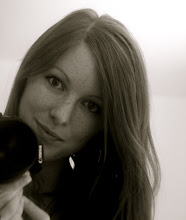Rough Sleepers
Blurb:
Brian Jones is a rough sleeper who has been living on the streets for more than twenty years. Passed by and ignored on a daily basis while trying to scrape out a living by selling Big Issue magazines, Brian has become a living testimony of hope in the midst of the hardest of circumstances. This short documentary offers a glimpse, through the life of Brian Jones, into the reality of what it is to live as a rough sleeper.
Blurb:
Brian Jones is a rough sleeper who has been living on the streets for more than twenty years. Passed by and ignored on a daily basis while trying to scrape out a living by selling Big Issue magazines, Brian has become a living testimony of hope in the midst of the hardest of circumstances. This short documentary offers a glimpse, through the life of Brian Jones, into the reality of what it is to live as a rough sleeper.
The individual project, last project of the year, is now finished! After finishing the post production process, I then exported it as a QuickTime .mov file to upload it to my YouTube channel online and to burn it to a DVD using Apple program iDVD. I added and named chapter markers in Final Cut Pro before exporting in order for it to have a DVD menu for scene selection. I also added a slideshow of production stills as another menu selection and added music to the menu options, designing it all using an iDVD template.
post production process, I then exported it as a QuickTime .mov file to upload it to my YouTube channel online and to burn it to a DVD using Apple program iDVD. I added and named chapter markers in Final Cut Pro before exporting in order for it to have a DVD menu for scene selection. I also added a slideshow of production stills as another menu selection and added music to the menu options, designing it all using an iDVD template.
I then designed a DVD cover using the photo-editing program PhotoShop and a DVD cover template. I took the .psd file to a print shop to have it printed off correctly, and although there were some formatting issues that I had to quickly fix last-minute in the shop, they printed off a professional looking DVD cover that I was able to hand in the DVD in along with the production folder.
I hugely enjoyed doing this last project, as even though it was frustrating or time-consuming at times because of technical issues, it was a rewarding and fulfilling piece that I am happy with the end product of. It's hard to believe that the first year of being a Creative Media Practice student is now finished, but I can honestly say I enjoyed it, have grown in the technical skills of producing media and have learned much from the process. Below is my finished individual project, Rough Sleepers:
 post production process, I then exported it as a QuickTime .mov file to upload it to my YouTube channel online and to burn it to a DVD using Apple program iDVD. I added and named chapter markers in Final Cut Pro before exporting in order for it to have a DVD menu for scene selection. I also added a slideshow of production stills as another menu selection and added music to the menu options, designing it all using an iDVD template.
post production process, I then exported it as a QuickTime .mov file to upload it to my YouTube channel online and to burn it to a DVD using Apple program iDVD. I added and named chapter markers in Final Cut Pro before exporting in order for it to have a DVD menu for scene selection. I also added a slideshow of production stills as another menu selection and added music to the menu options, designing it all using an iDVD template.I then designed a DVD cover using the photo-editing program PhotoShop and a DVD cover template. I took the .psd file to a print shop to have it printed off correctly, and although there were some formatting issues that I had to quickly fix last-minute in the shop, they printed off a professional looking DVD cover that I was able to hand in the DVD in along with the production folder.
I hugely enjoyed doing this last project, as even though it was frustrating or time-consuming at times because of technical issues, it was a rewarding and fulfilling piece that I am happy with the end product of. It's hard to believe that the first year of being a Creative Media Practice student is now finished, but I can honestly say I enjoyed it, have grown in the technical skills of producing media and have learned much from the process. Below is my finished individual project, Rough Sleepers:

















